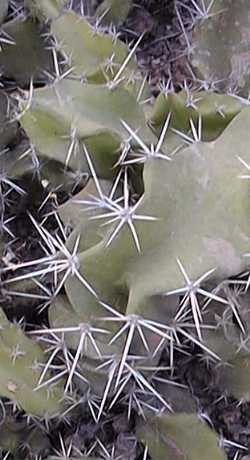Barbed wire Cereus, Pitahaya Anaranjada
Scientific Name: Acanthocereus tetragonus (L.) Hummelinck
Synonym: Acanthocereus acutangulus, Acanthocereus brasiliensis, Acanthocereus columbianus, Acanthocereus floridanus, Acanthocereus pentagonus, Acanthocereus pitajaya, Acanthocereus princeps, Cactus pitajaya, Cactus prismaticus, Cereus acutangulus, Cereus pentagonus
Family: Cactaceae
Frost Tolerance: Hardy to at least 25°F (-4°C)
Sun Exposure: Light shade to shade
Origin: South Texas to Venezuela, on the Atlantic coast of Central America
Growth Habits: Creeping cactus, occasionally columnar and shrubby, older trunks are rounded; up to 20 feet long or tall (6 m), 3-angled to 5-angled, areoles around 1 inch apart (2.5 cm); dark grey spines, 1 or more centrals, 6 to 8 radials.
Propagation: Cuttings, seeds
This species has been in cultivation all around the caribbean for its fruits. It is very variable.
Blooming Habits:
Flowers light green with brown wool outside, purplish cream inside. It blooms at night in late summer. The flowers are followed by 1 inch in diameter (2.5 cm), red, oblong, edible fruits
Desert-Tropicals is dedicated to provide gardening advice, gardening ideas, and information about flower of all kind for landscape and collections.We try to check carefully the identification of the plants on the illustrations as well as the other information from the page, but occasionally errors do occur. if you notice anything that needs to be changed please contact us.Thanks.
© 1998-2020 Philippe Faucon, All Rights Reserved.
